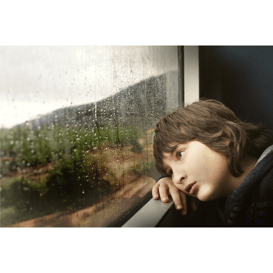Student Anxiety in the Post-Pandemic Classroom

Students Are Returning To The Classroom With Heightened Anxiety
Students are returning to the classroom with more anxiety than ever, according to teachers across multiple disciplines. Student anxiety has been on the rise for years but has been exacerbated by the COVID-19 pandemic to never-before-seen levels. Teachers and parents are both concerned that if what is being described as a "mental health crisis" is not addressed, their students and children will experience long-lasting impacts on their social-emotional health and well-being.

For instance, in a May 2020 Gallup poll, 45% of surveyed parents said their child's mental and emotional health is suffering as a result of distance learning. This outcome was forewarned in an April 2020 Lancet study.
"'Going to school had been a struggle for [some children with depression] prior to the pandemic, but at least they had school routines to stick with”, said Zanonia Chiu, a registered clinical psychologist working with children and adolescents in Hong Kong, where schools have been closed since Feb 3 [2020]. “Now that schools are closed, some lock themselves up inside their rooms for weeks, refusing to take showers, eat, or leave their beds.'
"For some children with depression, there will be considerable difficulties adjusting back to normal life when school resumes. Children with special education needs, such as those with autism spectrum disorder, are also at risk.'"
Lancet's findings echo students in the United States.
More than a year after the Lancet study was published, many of those warnings have come into fruition. For instance, a Sept. 2020 survey found that 66%, or two-thirds, of parents said that their child had expressed concerns or anxiety about going back to school during the pandemic. By that same survey, 74% of parents said they felt COVID-19 had impacted the mental health of their child, while 27% said that the impact had been "significant." A whopping 85% of parents said that these behaviors were new.

"“Kids are saying things like, ‘I don’t want to go back to school,’ or ‘I don’t want to be away from you,'" said Rachel Busman, PsyD, director of the Anxiety Disorders Center at the Child Mind Institute, in an article for Childmind.org. "'They’ve been out of the routine of going to school for so long it’s reasonable that they might struggle. And they might take a little bit longer to adapt, especially to these hybrid schedules.”
Several teachers that Fit and Fun Playscapes spoke with specifically stated, without being prompted, that kids have returned to school with heightened anxiety/depression symptoms. All of them said it was worse than the period prior to the pandemic.
"Kids don't know how to function anymore in a school environment," one special education teacher from Georgia told us. "They have anxiety sitting for and taking tests."
However, it isn't the same everywhere. Some teachers are finding that their students are adjusting just fine.
"As an APE and elementary PE teacher, kids who are back at school have been able to adjust fairly well," said Alexis Abdo-Davis, a physical education teacher in the Skaneateles school district and 2021 NYS AHPERD Teacher of the Year. "I see mostly K-3 classes for PE – and the kiddos who attend school seem to be doing well as long as they have adequate opportunity to play and move throughout the day."
What To Do If You See Students Experiencing Anxiety

Managing student anxiety is a monumental task for any teacher, but there are options teachers can use to help. Cedars-Sinai, a nonprofit healthcare organization in the Los Angeles area, created a fantastic blog post about how to manage student anxiety heightened by the COVID-19 pandemic.
Know What To Expect
"First, be informed about the real risks and benefits of a return to in-person school during the ongoing pandemic," they write. "Consult reputable sources, such as the Centers for Disease Control and Prevention, about how the virus that causes COVID-19 is transmitted and requirements for schools to reopen safely."
Observe Your Child/Students' Behavior
Make sure to pay attention to your students! Cedars-Sinai writes, "Watch for signs of depression: Children may become withdrawn, develop eating disorders or anxiety around food, and their stress might manifest in abdominal or other physical pain. Kids who have been cyberbullied during virtual learning, especially, will undergo emotional strain in social settings."
Communicate!
Be sure to communicate with your kids! Cedars-Sinai suggests, "If they express fear or anxiety, validate their feelings—your support can help them continue to be honest with you, so that you're aware of and able to address issues. At the same time, reassure kids that schools are following public health guidelines.
Other Resources
"The Pandemic Will Affect Students’ Mental Health for Years to Come. How Schools Can Help." via EducationWeek
"Returning to School: Separation Problems and Anxiety in the Age of Pandemics"
Have any other tips? Let us know in the comments!



Leave a comment